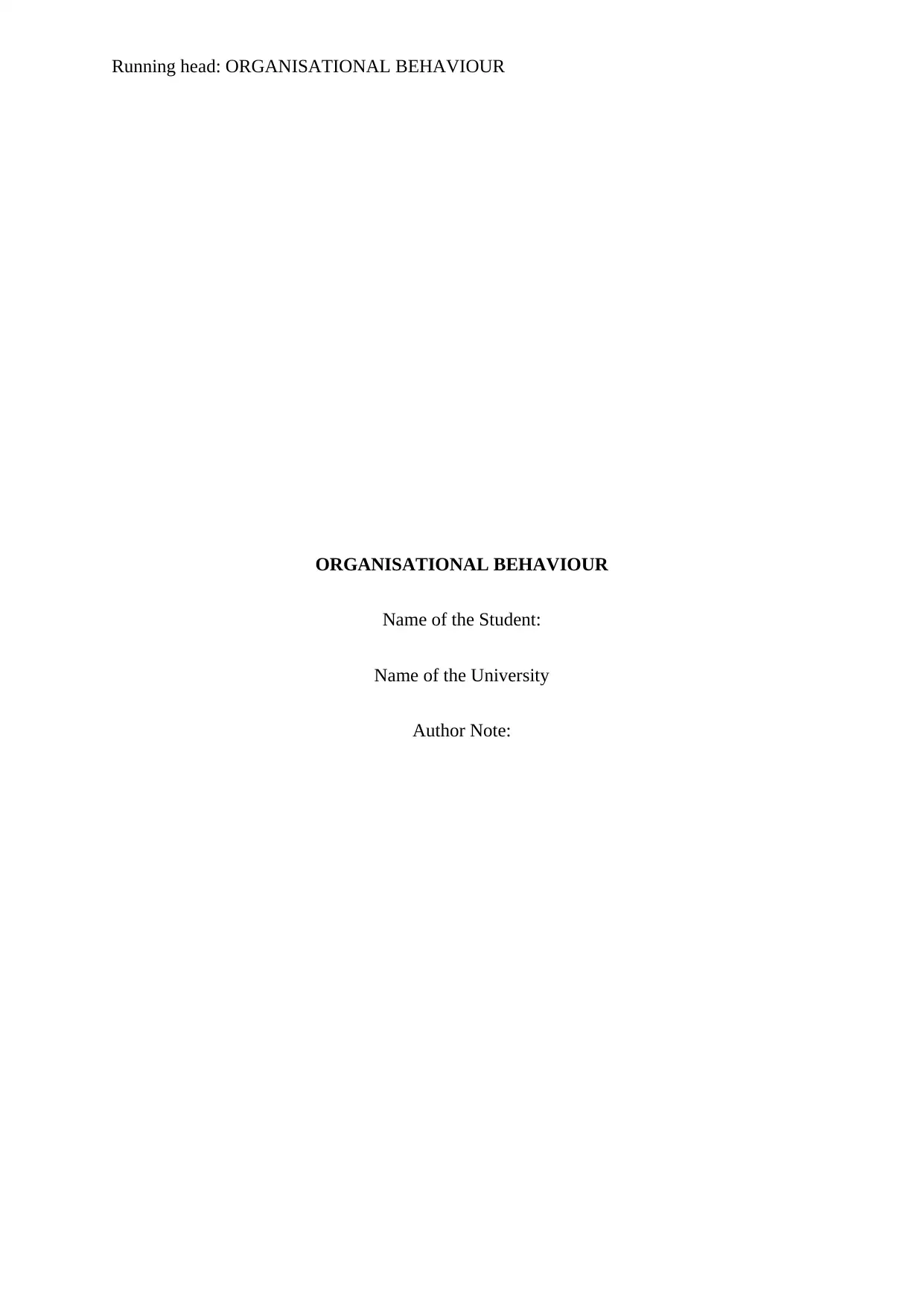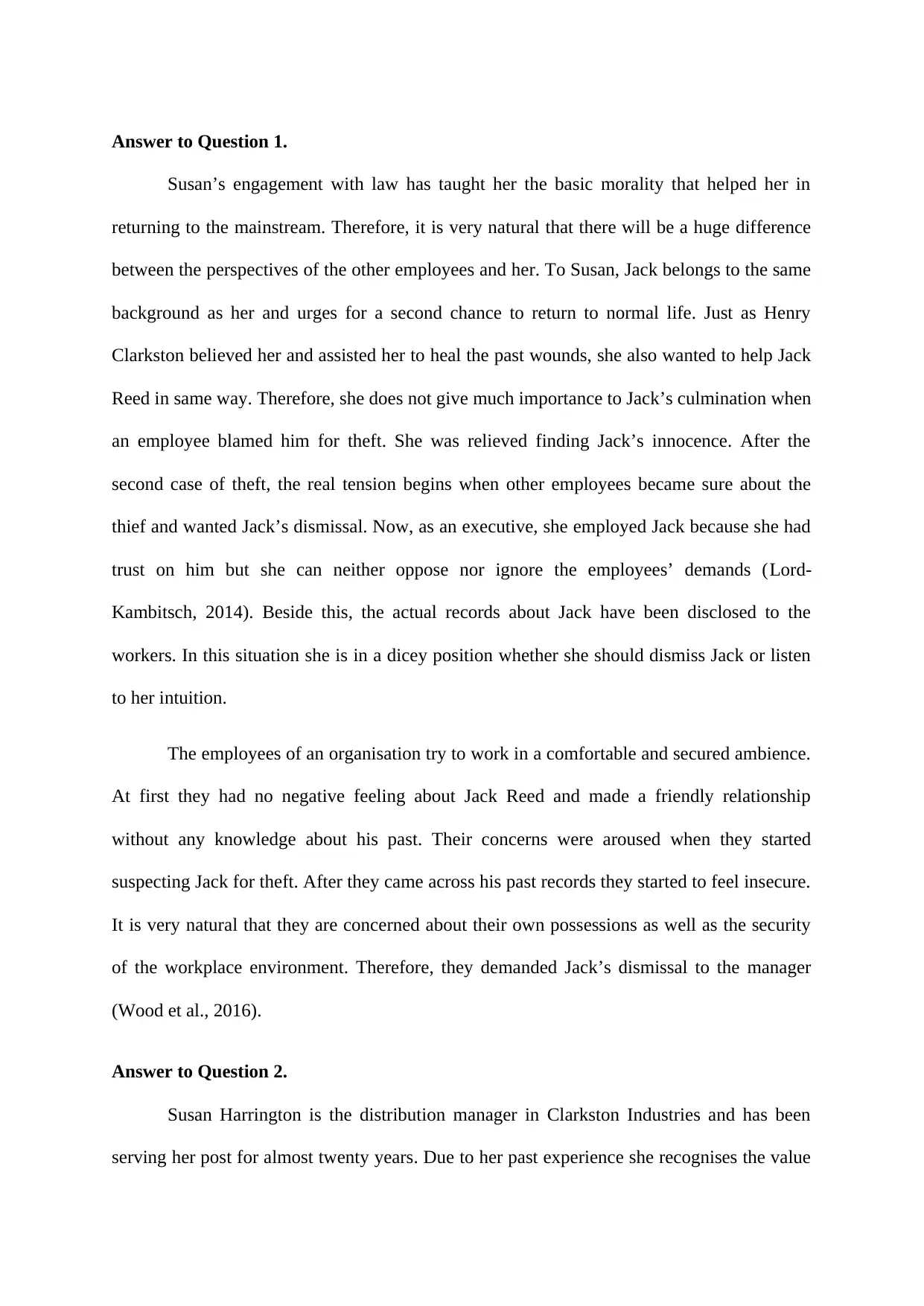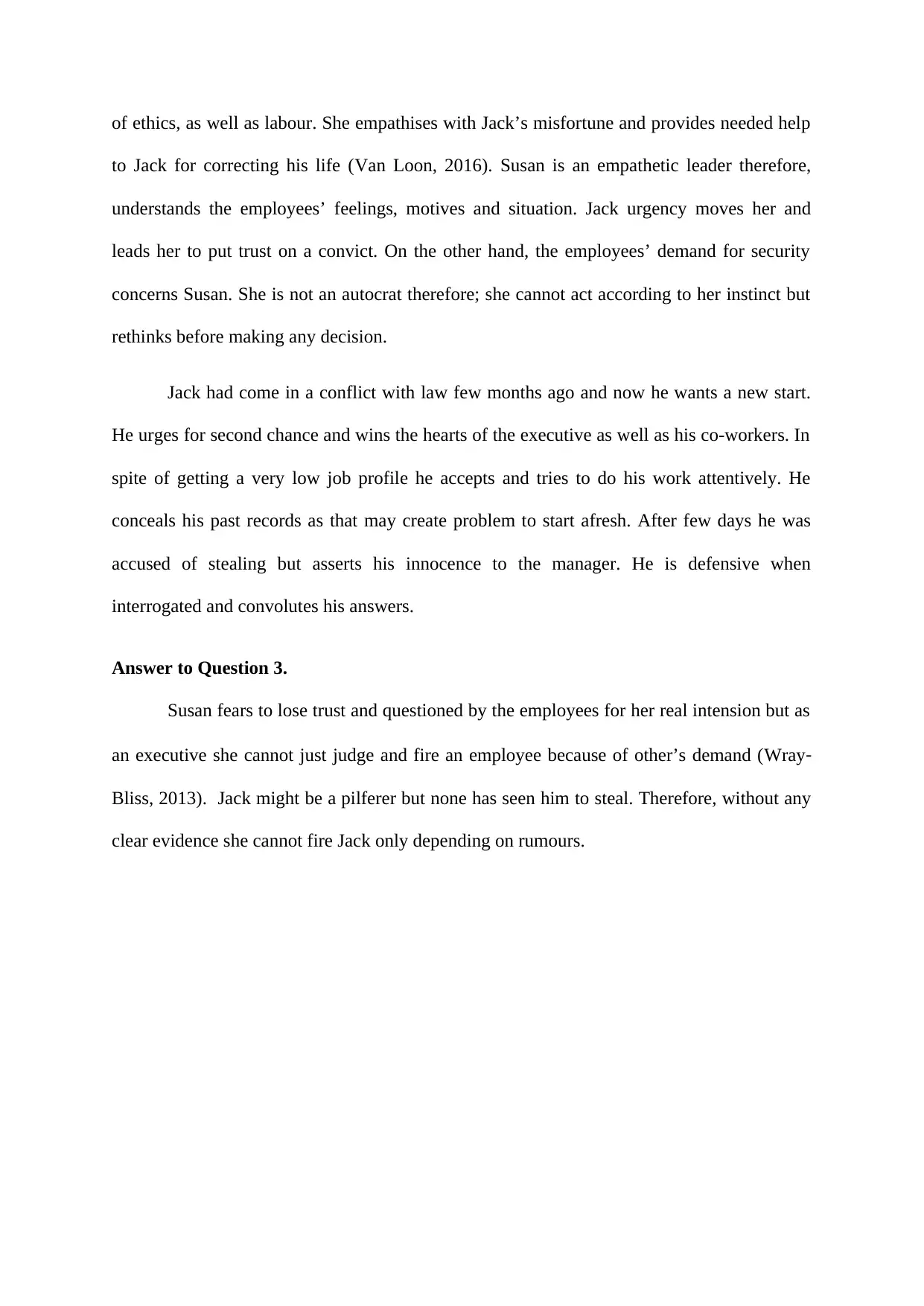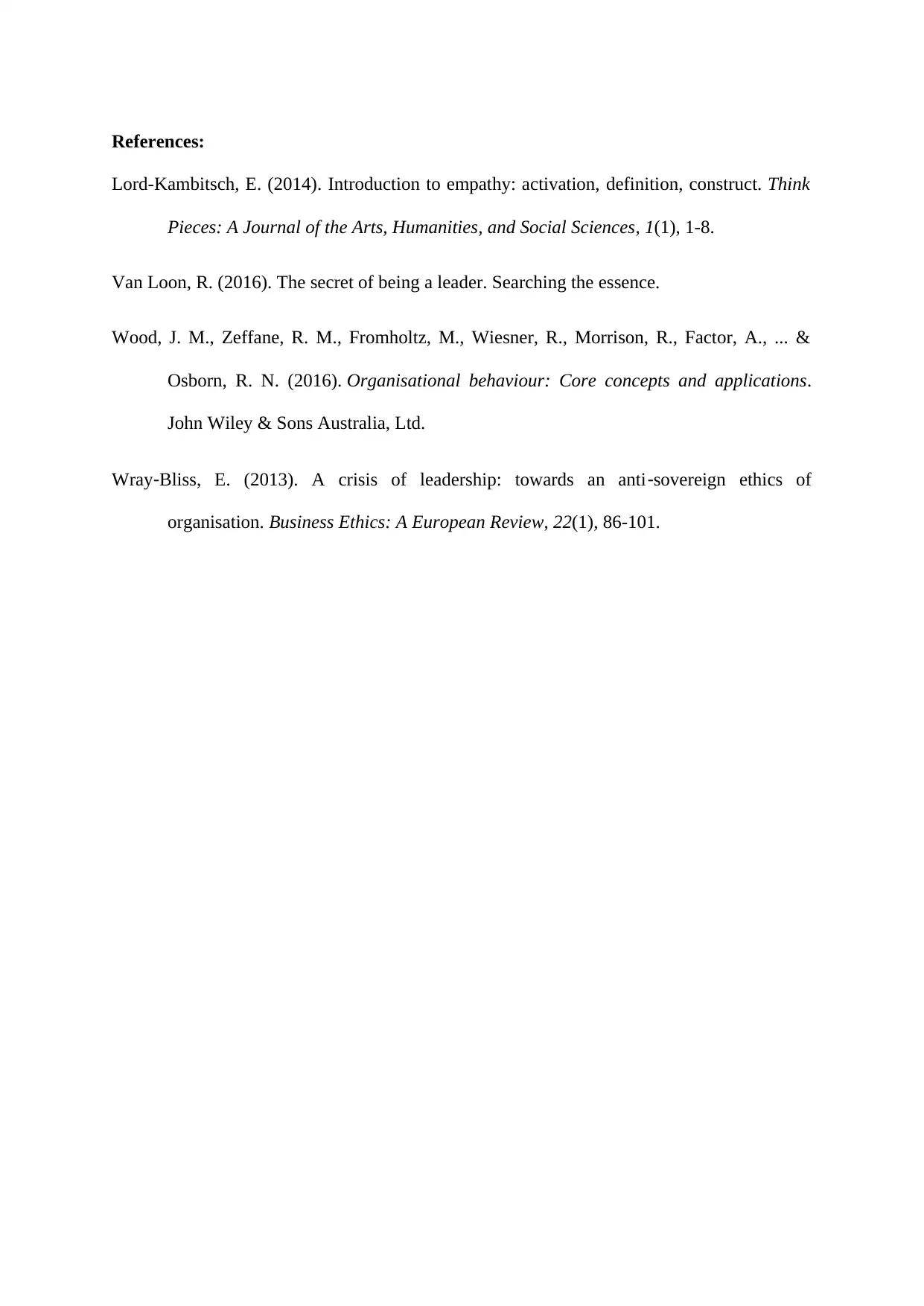Organisational Behaviour: Case Study of Clarkston Industries
VerifiedAdded on 2020/04/21
|5
|813
|93
Report
AI Summary
This report presents an analysis of an organisational behaviour case study centered on Clarkston Industries. The case explores the complexities of leadership, employee relations, and ethical decision-making within an organization. The analysis focuses on Susan Harrington, the distribution manager, and her handling of a sensitive situation involving an employee with a troubled past, Jack Reed, who is suspected of theft. The report examines the conflicting perspectives of Susan, who empathizes with Jack, and the other employees who feel insecure and demand his dismissal. It delves into the challenges Susan faces in balancing her intuition, ethical considerations, and the demands of her employees. The report also discusses the importance of ethics, employee security, and the impact of past records on workplace dynamics. Key themes include empathetic leadership, workplace conflict, and the complexities of decision-making in the face of conflicting interests and limited evidence.
1 out of 5












![[object Object]](/_next/static/media/star-bottom.7253800d.svg)